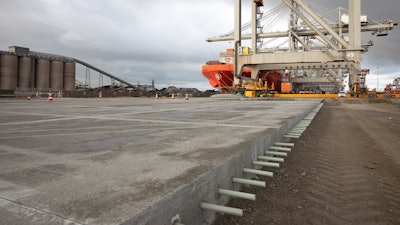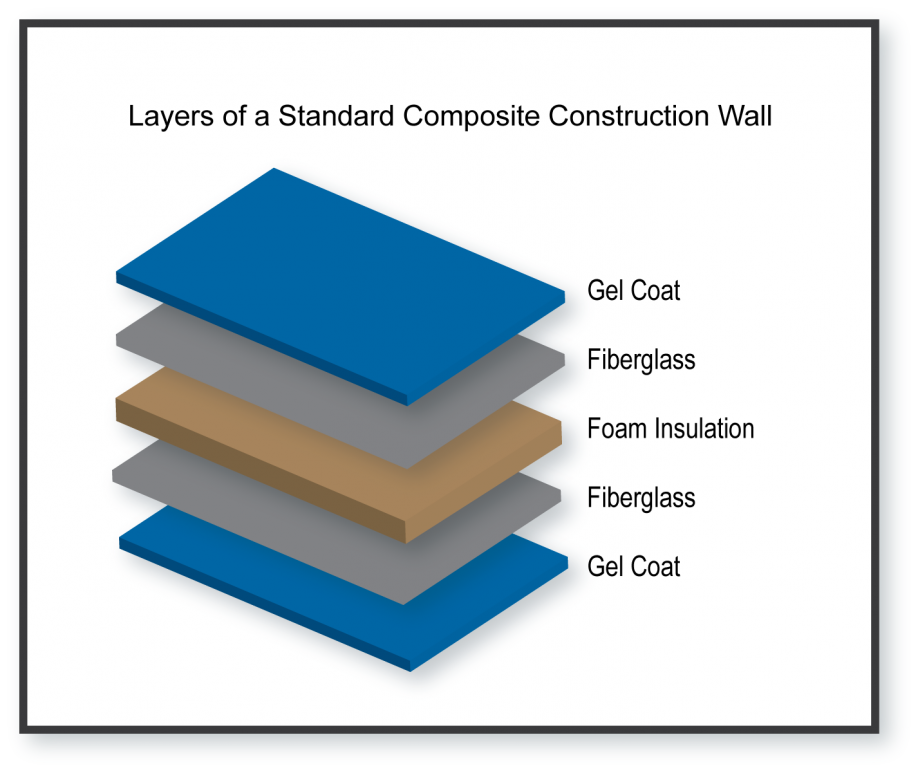The Advantages of Using Composites in Building And Construction Products
The Advantages of Using Composites in Building And Construction Products
Blog Article
Opening the Environmental Advantages of Recycled Composites in Building And Construction and Style
In the realm of construction and design, the application of recycled composites holds substantial assurance for boosting sustainability methods and minimizing ecological effect (composites). By incorporating these cutting-edge products, there is a prospective to resolve essential problems such as waste minimization, power conservation, and a decline in carbon footprint. The change towards a more lasting future in these sectors rests on unlocking the full potential of recycled compounds. This conversation will explore the diverse benefits and difficulties connected with incorporating recycled composites into construction and style, offering a look into the transformative opportunities that exist ahead.

Environmental Effect Reduction
The reduction of ecological influence with making use of recycled composites in construction and design plays an essential role in lasting methods. By integrating recycled composites right into building materials, the building and construction sector can substantially reduce its carbon footprint and add to an extra environment-friendly future. These sustainable products, made from repurposed plastics, wood fibers, or various other recycled components, use a practical option to conventional construction products without jeopardizing on high quality or sturdiness.
Recycled compounds help draw away waste from garbage dumps and minimize the requirement for extracting basic materials, thus saving natural deposits. Additionally, the manufacturing process of these compounds typically consumes much less power and gives off fewer greenhouse gases contrasted to generating virgin products (composites). This change in the direction of making use of recycled compounds not just reduces ecological damage yet additionally advertises a round economic situation by motivating the reuse of materials that would otherwise be thrown out
Waste Reduction
With an emphasis on minimizing waste in building and style, the integration of recycled composites supplies a sustainable solution to reduce ecological impact. Waste reduction is an important aspect of lasting practices, and using recycled composites offers a possibility to achieve this objective properly. By using materials that have currently served their initial objective, such as recycled plastics or recovered wood fibers, the construction and layout markets can substantially decrease the quantity of waste produced and sent out to garbage dumps.
Recycled compounds have the potential to divert substantial quantities of waste from typical disposal methods, adding to an extra circular economy where resources are made use of efficiently. Furthermore, the manufacturing procedure of recycled compounds frequently eats much less power and generates fewer emissions contrasted to virgin materials, even more minimizing the ecological impact of construction and design jobs.
Carrying out waste minimization techniques via the consolidation of recycled composites not just helps in preserving natural deposits yet additionally promotes a much more lasting technique to structure and designing for a greener future.
Power Conservation
Integrating recycled compounds not just reduces waste in building and design but additionally plays an important role in enhancing power conservation techniques within the market. Using recycled compounds in building i loved this and construction can substantially add to power conservation via different means. To start with, the production of virgin products normally needs substantial power inputs, whereas utilizing recycled composites eats less power, consequently minimizing general power usage. In addition, incorporating recycled composites can contribute to much better you could try this out insulation buildings in buildings, decreasing the requirement for extreme heating or air conditioning, and subsequently reducing power use for environment control. Moreover, the light-weight nature of several recycled composites can bring about lighter frameworks, requiring much less energy for transport and installment. By promoting using recycled compounds in building and construction and style, the market can make significant strides in the direction of accomplishing energy effectiveness and decreasing its carbon impact, ultimately adding to a more sustainable built setting.
Carbon Footprint Reduction
Enhancing sustainability practices via the application of recycled composites in building and construction and layout dramatically lowers the carbon impact of the market. By incorporating recycled materials right into the manufacturing of composites, the need for virgin sources lowers, bring about reduced energy consumption and greenhouse gas emissions connected with traditional production procedures. This reduction in carbon impact is critical in combating environment modification and advertising a much more ecologically friendly technique to building and design.
The carbon impact reduction achieved through the adoption of recycled compounds straightens with the worldwide push towards sustainable techniques and the decrease of industrial emissions. Eventually, by focusing on the assimilation of recycled compounds, the industry can make significant strides in reducing its carbon impact and contributing to a more lasting future.
Lasting Future
The assimilation of recycled composites in building and layout not only addresses prompt ecological issues yet also lays a solid foundation for a sustainable future in the industry. By including recycled composites right into building materials and products, the building and design markets can substantially minimize their dependence on virgin resources, resulting in an extra circular economic situation. This shift towards sustainability is critical for reducing the ecological effect of traditional building techniques, which typically result in high degrees of waste generation and resource exhaustion.

Final Thought
Finally, recycled composites supply significant environmental advantages in building and construction and design by minimizing environmental effect, lessening waste, preserving power, decreasing carbon footprint, and promoting a sustainable future. Accepting using recycled composites can add to an extra environmentally-friendly method to structure and layout, check here ultimately bring about a more sustainable and greener future for all.
The reduction of environmental effect via the use of recycled compounds in construction and layout plays an essential role in sustainable practices.With a focus on minimizing waste in construction and style, the integration of recycled compounds offers a lasting option to lower ecological impact. By advertising the usage of recycled composites in building and construction and design, the industry can make significant strides in the direction of attaining power performance and lowering its carbon impact, ultimately contributing to a more sustainable constructed setting.

Report this page